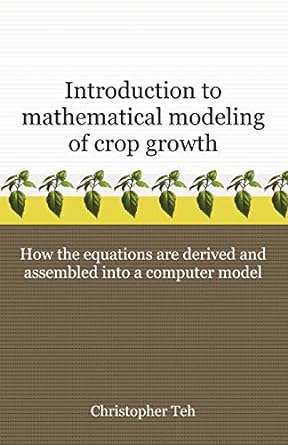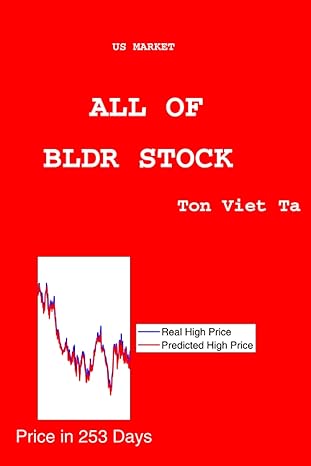Go back


Introduction To Mathematical Modeling Of Crop Growth How The Equations Are Derived And Assembled Into A Computer Model(1st Edition)
Authors:
Christopher Teh

Cover Type:Hardcover
Condition:Used
In Stock
Include with your book
Free shipping: April 04, 2024Popular items with books
Access to 3 Million+ solutions
Free ✝
Ask 10 Questions from expert
200,000+ Expert answers
✝ 7 days-trial
Total Price:
$0
List Price: $32.57
Savings: $32.57(100%)
Book details
ISBN: 1581129998, 978-1581129991
Book publisher: Brown Walker Press
Get your hands on the best-selling book Introduction To Mathematical Modeling Of Crop Growth How The Equations Are Derived And Assembled Into A Computer Model 1st Edition for free. Feed your curiosity and let your imagination soar with the best stories coming out to you without hefty price tags. Browse SolutionInn to discover a treasure trove of fiction and non-fiction books where every page leads the reader to an undiscovered world. Start your literary adventure right away and also enjoy free shipping of these complimentary books to your door.
Introduction To Mathematical Modeling Of Crop Growth How The Equations Are Derived And Assembled Into A Computer Model 1st Edition Summary: Learning mathematical modeling need not be difficult. Unlike other books, this book not only lists the equations one-by-one, but explains in detail how they are each derived, used, and finally assembled into a computer program for model simulations. This book shows how mathematics is applied in agriculture, in particular to modeling the growth and yield of a generic crop. Topics covered are agriculture meteorology, solar radiation interception and absorption, evapotranspiration, energy and soil water balance, soil water flow, photosynthesis, respiration, and crop growth development. Rather than covering many modeling approaches but in superficial detail, this book selects one or two widely-used modeling approaches and discusses about them in depth. Principles learned from this book equips readers when they encounter other modeling approaches or when they develop their own crop models.
Customers also bought these books
Frequently Bought Together
Top Reviews for Books
Edmundo Zevallos
( 5 )
"Delivery was considerably fast, and the book I received was in a good condition."










